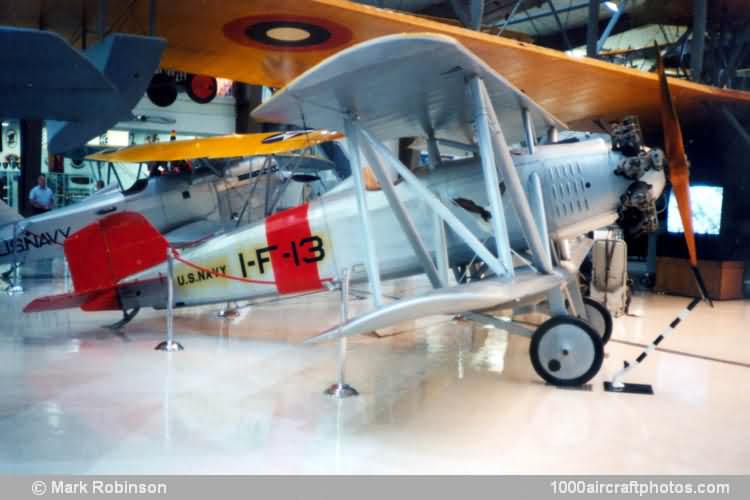04/30/2012. Remarks by Johan Visschedijk: "The NAF built four improved versions of the Curtiss 28 TS-1; two TS-2s (BuNos. A-6446, A-6447) with 220 hp Aeromarine U-8-D engines and two TS-3s (BuNos. A-6448, A-6449) with 180 hp Wright E-2 engines.
The two TS-2s (BuNos. A-6446, A-6447) were scheduled to have their Aeromarine U-8-D engines replaced by Wright E-2 engines, and would become TS-3s. However, A-6446 had its Aeromarine engine removed, but the Wright engine was not installed and the aircraft was stricken from the Navy inventory on March 29, 1926, the following year it was shipped to the Aerodynamics Laboratory at Stanford University. In 1948, the Smithsonian Institution acquired A-6446, and now it is on long term loan with the National Museum of Naval Aviation.
US Navy VF-1 (Fighting Squadron One) never operated TS-2s, however, A-6446 is wearing the markings of the squadron, including the code 1-F-13 seen on the original VF-1 TS-1 Note the diving bird insignia of VF-1 which was abandoned because of its similarity to the parrot used by the Ghirardelli Chocolate Company in their advertising. The logo was replaced by a high hat in 1927, and the squadron became famous as the High Hats.
The last TS-3 was modified for the 1922 Curtiss Marine Trophy race by a change of airfoil section on the wings and redesignated TR-2. Unsuccessful in this contest, it was then extensively modified to incorporate a more streamlined fuselage and had the upper wing lowered to the top of the fuselage to serve as a high-speed trainer for the Navy's 1923 Schneider Cup team, redesignated TR-3A.
The final step in the TS development came when the Navy awarded Curtiss a contract for the manufacture of two metal versions of the TS-1 for comparison of the then new metal structures with the traditional wood and wire used in the original aircraft. By this time the Navy was assigning designations according to the actual manufacturer of the aircraft, so the two metal TSs became F4C-1."
